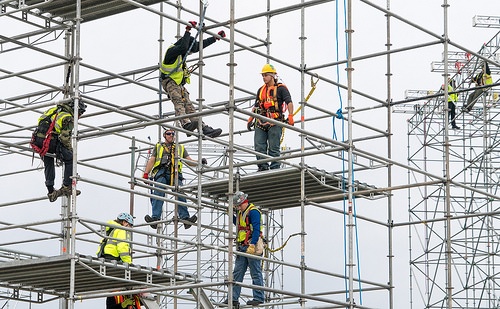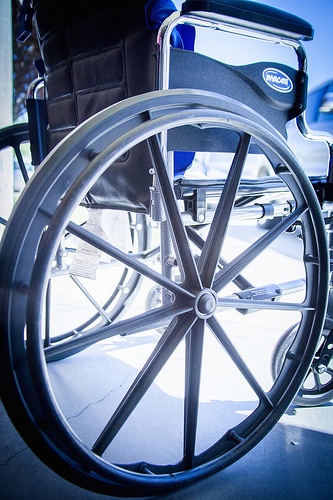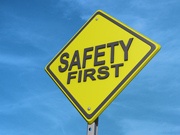Health care and social service workers suffer workplace violence at much higher rates than in most other sectors, because of the higher risk from their patients and clients. In response, worker protection laws and regulations have begun to require workplace violence prevention in these sectors. The California Occupational Safety and Health Standards Board (OSHSB) just adopted a new regulation, implementing 2014 legislation that expands state requirements for hospital security plans, to include specified workplace violence prevention programs. Compliance begins in phases during 2017-2018, and will be administered by the Division of Occupational Safety and Health (Cal/OSHA)).
Read MoreAudit, Compliance and Risk Blog
California Adopts Workplace Violence Prevention Requirements For Health Care Facilities
Posted by Jon Elliott on Thu, Feb 09, 2017
Tags: Employer Best Practices, Health & Safety, OSHA, Employee Rights, Workplace violence
Every province and territory in Canada provides that an employee may take leave from work pursuant to legislated leaves of absence, and thereafter be reinstated to his or her former position or comparable employment. Some of the leaves commonly given across many provinces include: maternity and paternity leave, adoption leave, bereavement leave, sick leave, and jury duty leave. Other types of leave that may be less known but which are nonetheless recognized in some provinces include emergency leave, leave for reservists, organ donation leave, and, most recently, leave for victims of domestic violence.
Read MoreOSHA Revises Walking, Climbing and Fall Protection Standards – Part 2 (Protective Systems and Training)
Posted by Jon Elliott on Tue, Jan 31, 2017
The Occupational Safety and Health Administration (OSHA) has issued massive revisions to its regulations requiring most employers (“General Industry”, in OSHA parlance), to protect employees from slip and fall hazards in most workplace contexts, including:
Read MoreTags: Employer Best Practices, Health & Safety, OSHA, Employee Rights, Environmental risks
The Internet continues to develop and evolve at lightning-fast speed, with new sites and platforms bursting into prominence as others lose their popularity and fade away. Meanwhile, the law, which is not known for its rapid acceptance of new ideas and technology, struggles to keep up, and so do those who must keep up with both the technological and legal developments.
Read MoreTags: Business & Legal, Employer Best Practices, Employee Rights, Internet
OSHA Revises Walking, Climbing and Fall Protection Standards – Part I (Surfaces and Pathways Between Levels)
Posted by Jon Elliott on Mon, Jan 23, 2017
The Occupational Safety and Health Administration (OSHA) has issued massive revisions to its regulations requiring most employers (“General Industry”, in OSHA parlance), to protect employees from slip and fall hazards in most workplace contexts, including:
Read MoreTags: Employer Best Practices, Health & Safety, OSHA, Employee Rights
Buzz, buzz. Ring, ring. Your eyes are instantly open as the sharp sounds of your smartphone alarm ring in your ears. After reaching over to quell the noise, you jump out of bed, eager to begin your first day as director of marketing for Tech, Inc. Your workday begins with HR orientation. Without much explanation, your hiring manager drops reams of paperwork on your lap. One of the documents is titled “Tech, Inc. Social Media Policy,” while another is a form seeking your personal social media account usernames and passwords. After orientation, you are escorted to your new office, which, to your chagrin, is a small cubicle instead of a plush corner suite. You are assigned your first task: to launch an advertising campaign comparing Tech to rival company, Widget, Inc., along with a promotion in which customers pick three numbers for $2 for a chance to win Tech’s latest gadget. You proudly squeeze promotional information, a slight jab at Widget, and a photo of the prize in a 140-character tweet. After a long first day of work, you arrive at home and post to Facebook: “First day of work. :-) HR sucks. Cubicle is tiny. :-) Thinking about complaining. #newjob #TechInc #funemploymentover #realworld.”
Read MoreEEOC Issues Rule to Make Federal Government a Model Employer for People With Disabilities
Posted by Jon Elliott on Thu, Jan 12, 2017
Federal laws prohibit employers from basing employment decisions on a variety of factors, including “disability.” Private employers are subject to the Americans with Disabilities Act (ADA), while public agencies are subject to the Rehabilitation Act. Both laws are administered and enforced by the Equal Employment Opportunity Commission (EEOC), with states generally cooperating with EEOC or imposing similar requirements on state and local agencies. EEOC generally provides the same requirements and guidelines to both sets of employers, but there are differences.
Read MoreAs entrepreneurs commercialize “nanomaterials”, occupational safety and health (OSH) agencies and professionals are developing standards to evaluate and manage the associated hazards. These protective efforts cover the full range of OSH agency efforts. The easiest step is to expand application of the Employer’s General Duty to protect workers against workplace hazards to cover nanomaterials –easiest since this Clause requires employers to take steps against “recognized” hazards, and do not bind the agencies to promulgate specific standards (I’ve written about the General Duty Clause here, and about recommendations for comprehensive safety and health programs here). At the other extreme, the Occupational Safety and Health Administration (OSHA) or other OSH agencies can issue enforceable OSH standards –so far there are none exclusively addressed to nanomaterials, although some materials do trigger some standards (see below). Between these extremes, agencies can and do offer non-mandatory but detailed guidelines for some hazards – the National Institute for Occupational Safety and Health (NIOSH) just issued such a guide for nanomaterials, building on similar publications by other agencies. The rest of this blog discusses the new NIOSH guide, “Building a Safety Program to Protect the Nanotechnology Workforce: A Guide for Small to Medium-Sized Enterprises” (NIOSH Guide), and references some of resources used to produce them.
Read MoreTags: Employer Best Practices, Health & Safety, OSHA, Employee Rights, EPA
Creating a Security-Conscious Community to Prevent Violent Acts in the Workplace
Posted by W. Barry Nixon on Tue, Nov 22, 2016
The time has come to shift our thinking about how to prevent violent attacks in the workplace. Business as usual will not keep our workplaces safe from terrorist attacks.
Read MoreTags: Employer Best Practices, Employee Rights, Workplace violence
On October 18, the Occupational Safety and Health Administration (OSHA) issued “Recommended Practices for Safety and Health Programs” (Recommendations) – which revises its 1989 “Safety and Health Program Management Guidelines” (S&H Guidelines). As the name indicates, these recommendations suggest activities employers should undertake to ensure their employees’ safety and health. They are not regulations or other requirements, but the 1989 Guidelines have long been used by agency inspectors and onsite S&H personnel as generally applicable roadmaps to safer workplaces. This month’s revision end a review process that included a proposal and request for comments published in November 2015 (I blogged about the proposal here).
Read MoreTags: Employer Best Practices, Health & Safety, OSHA, Employee Rights










